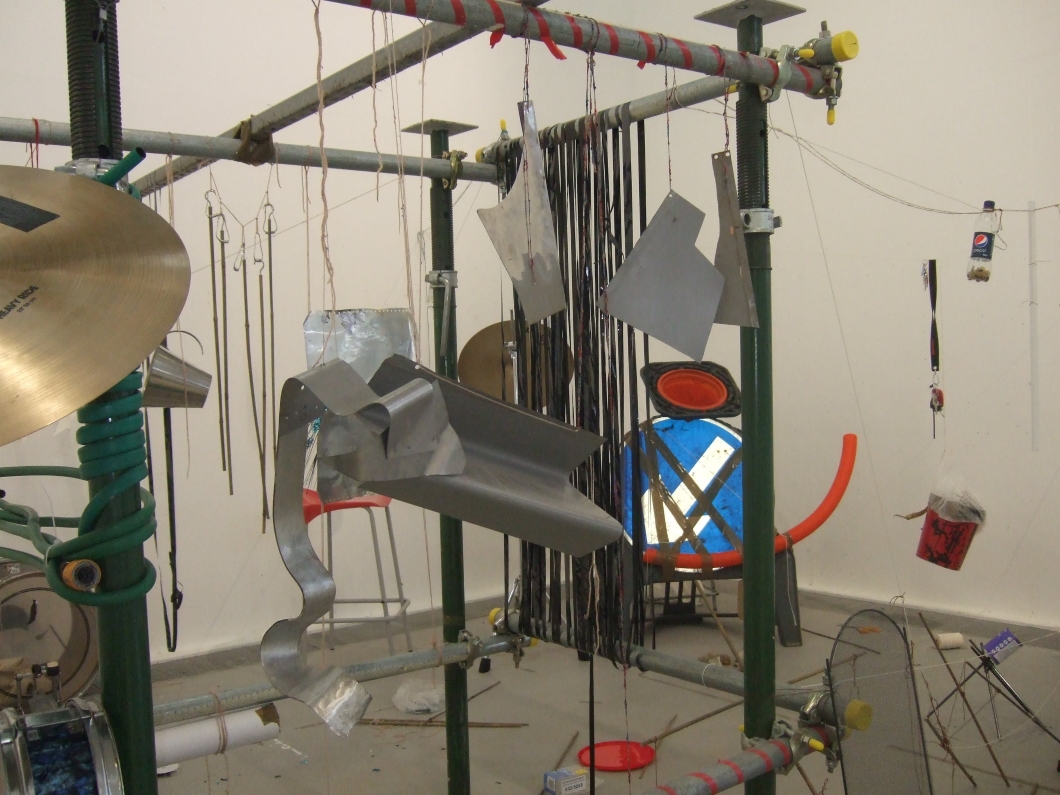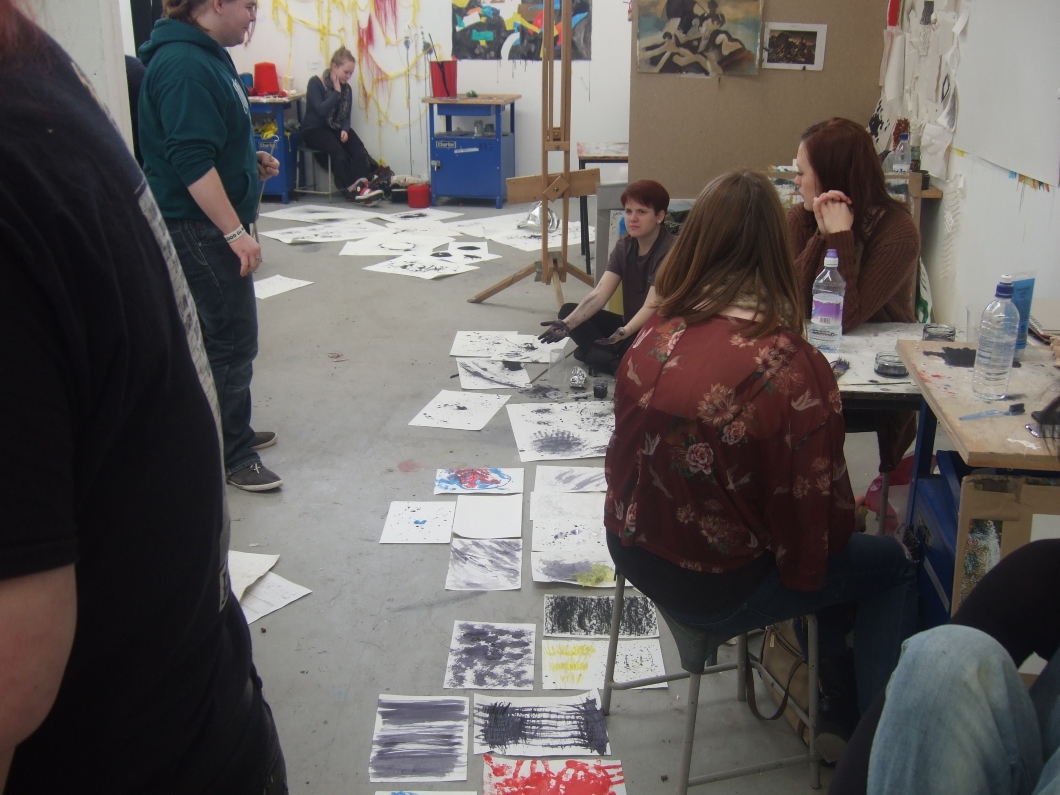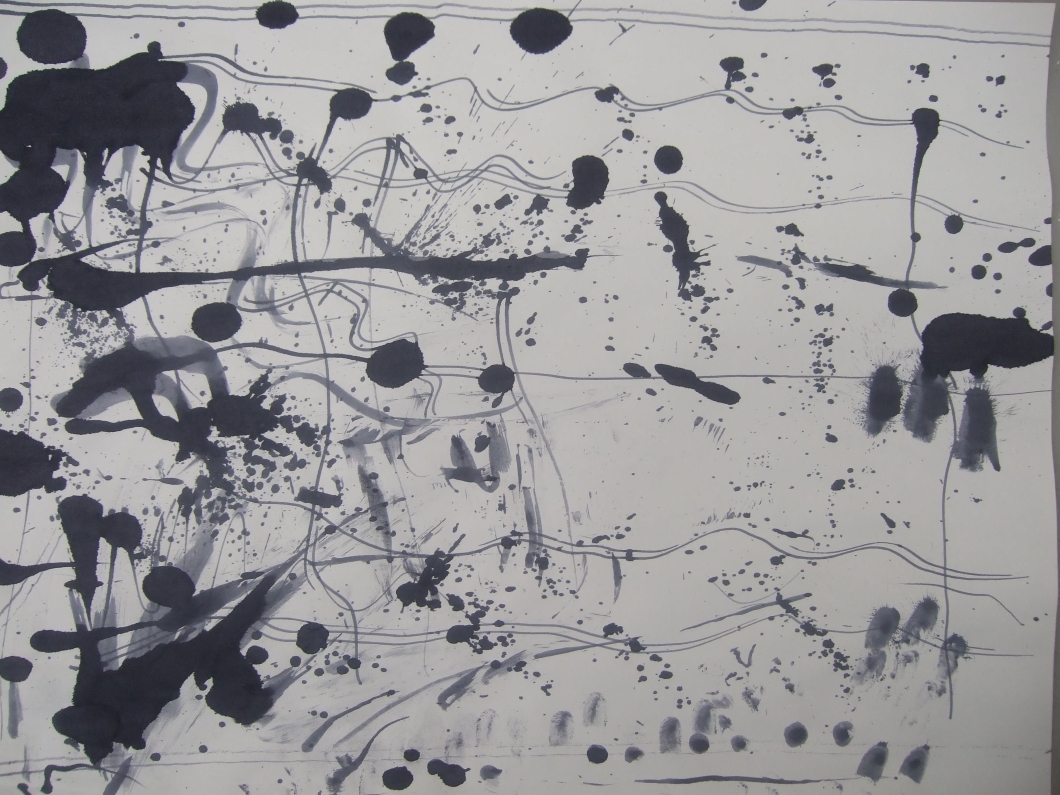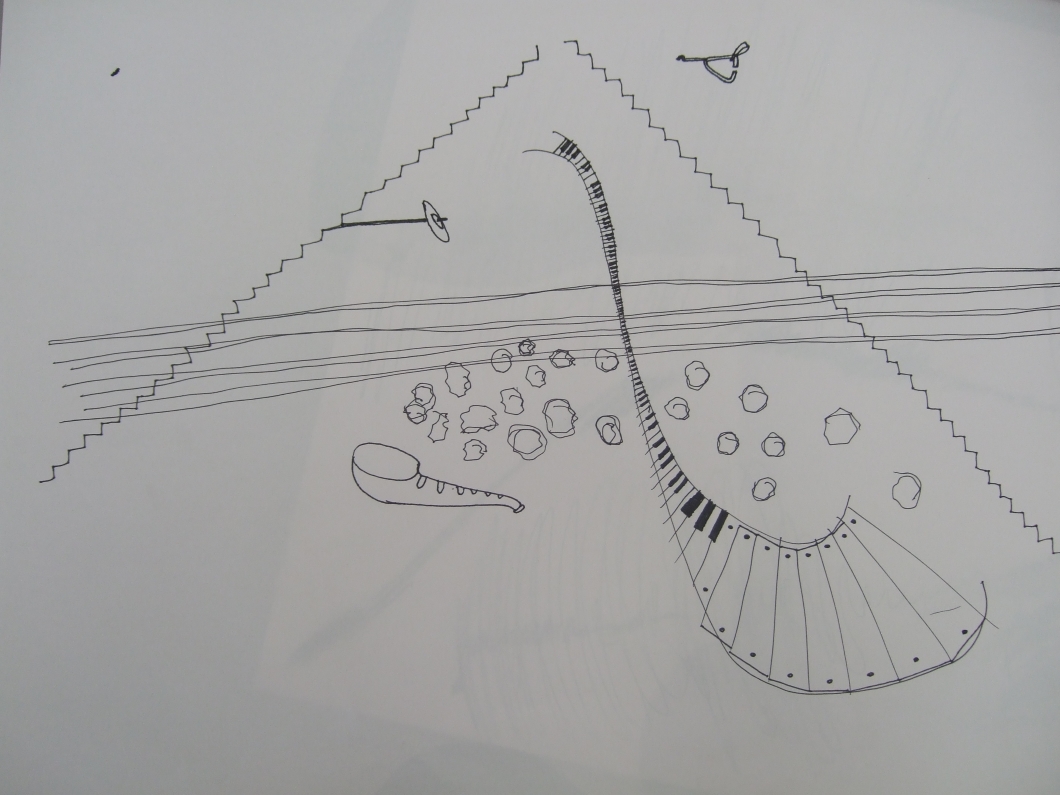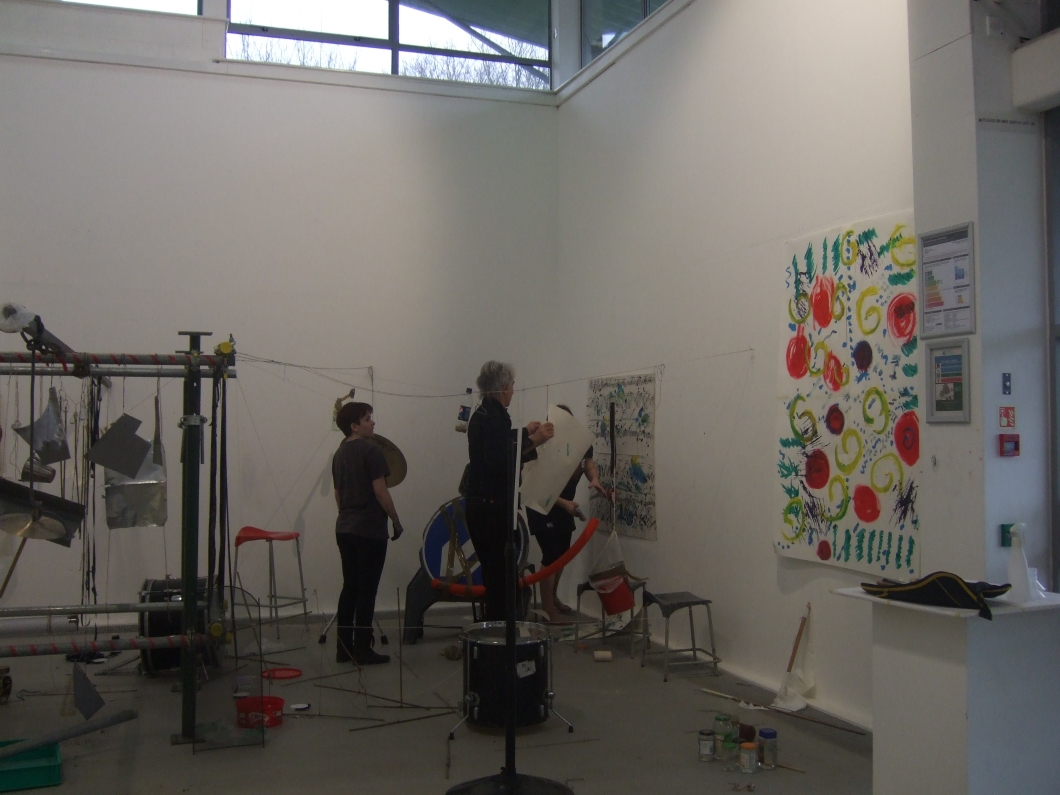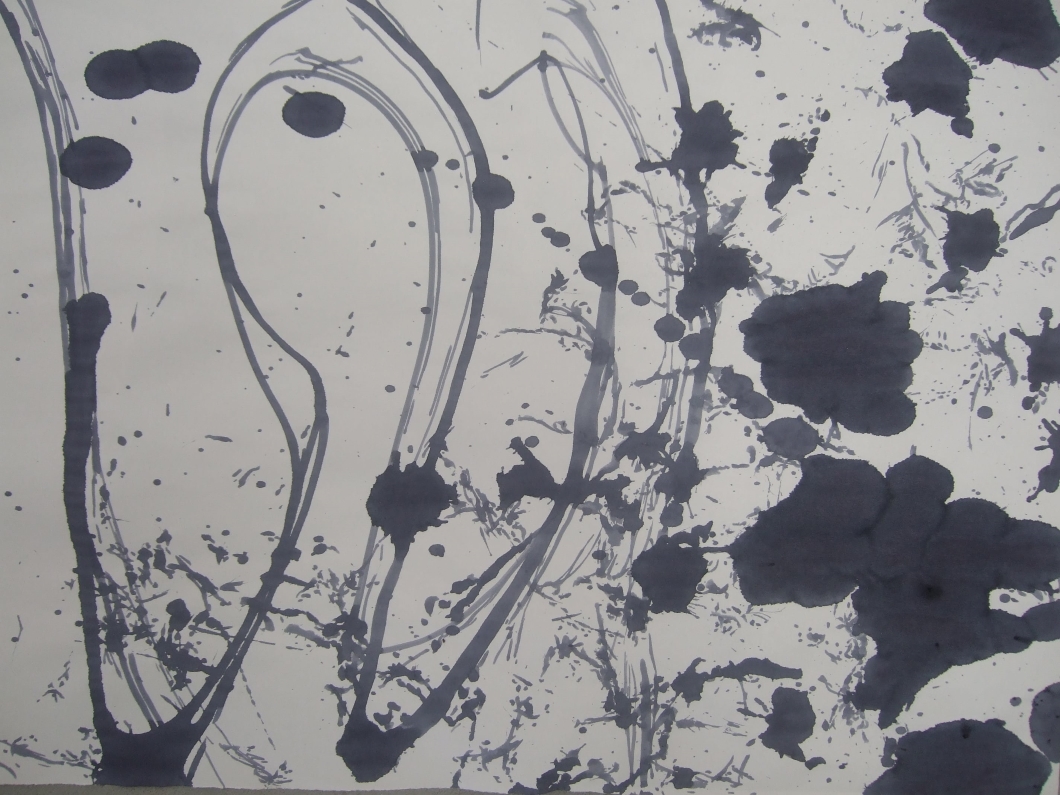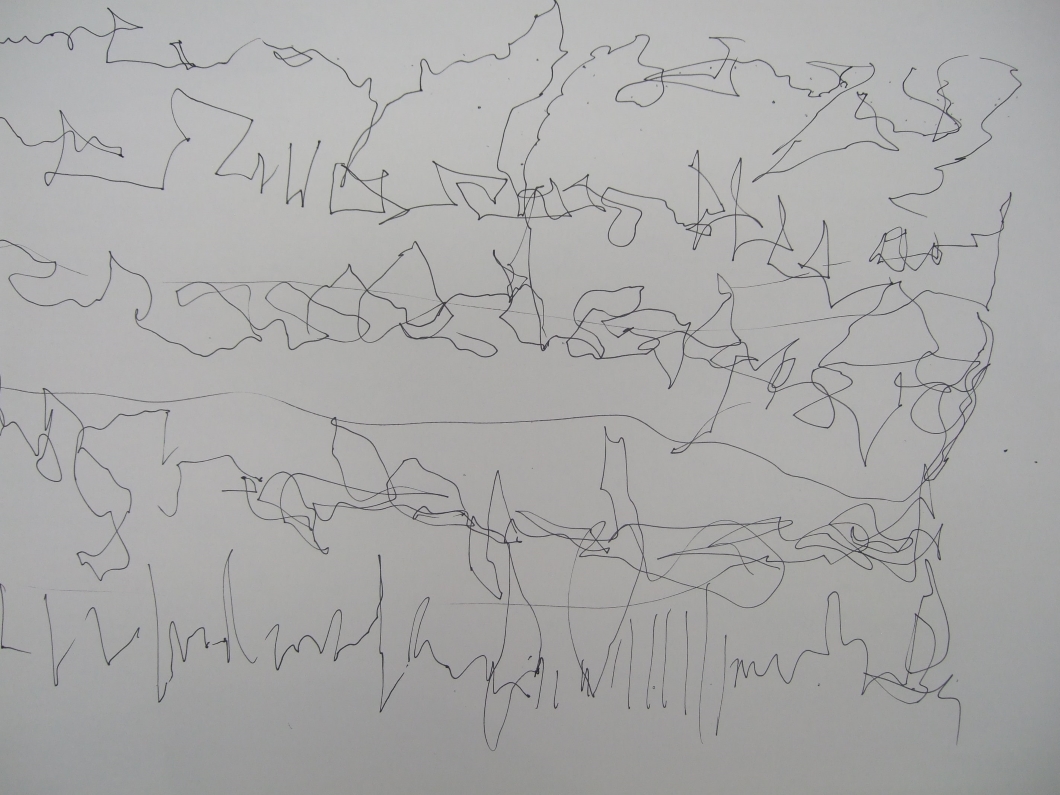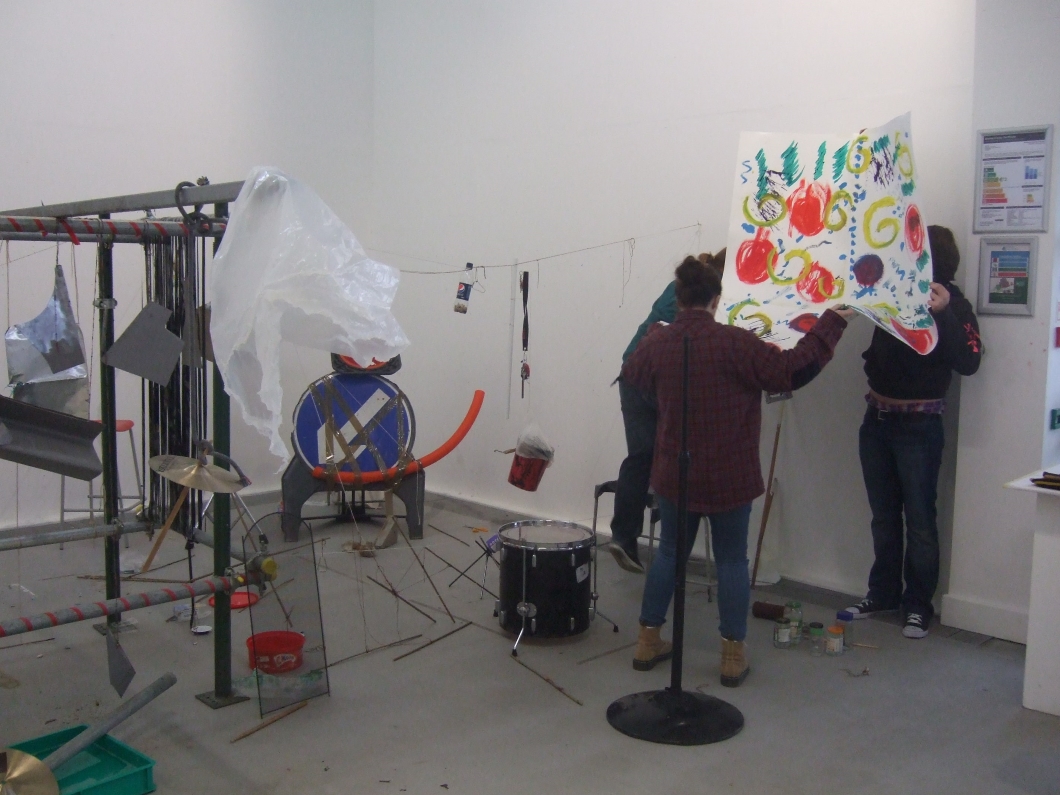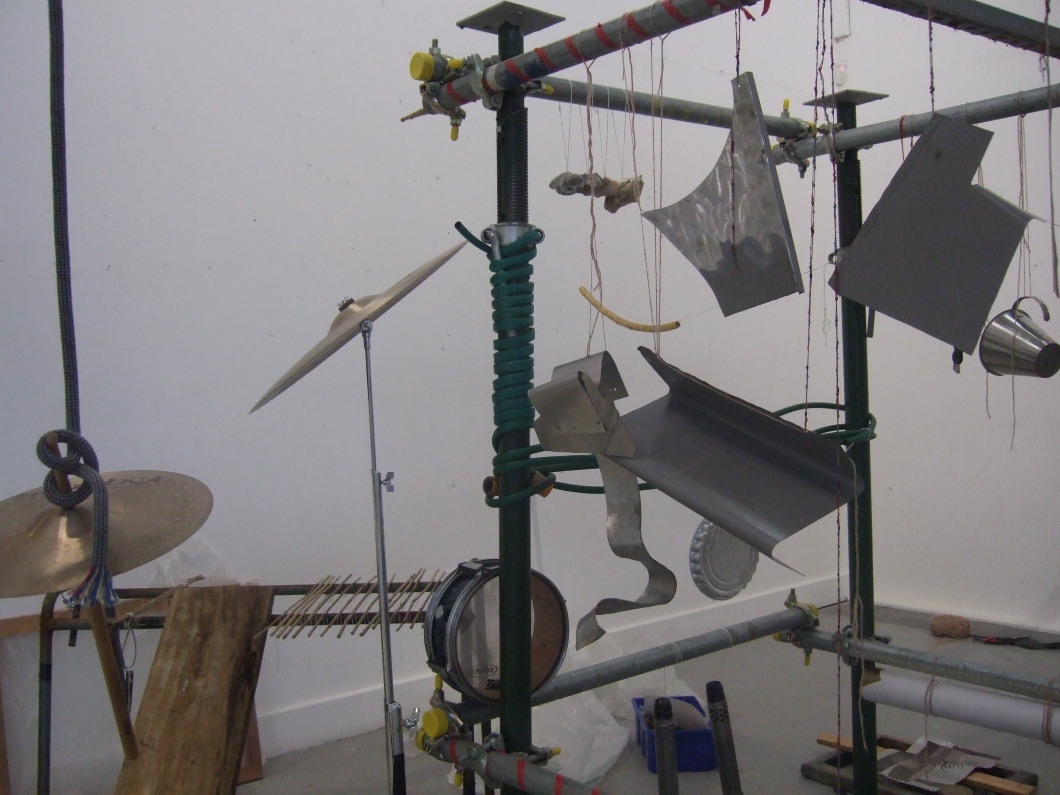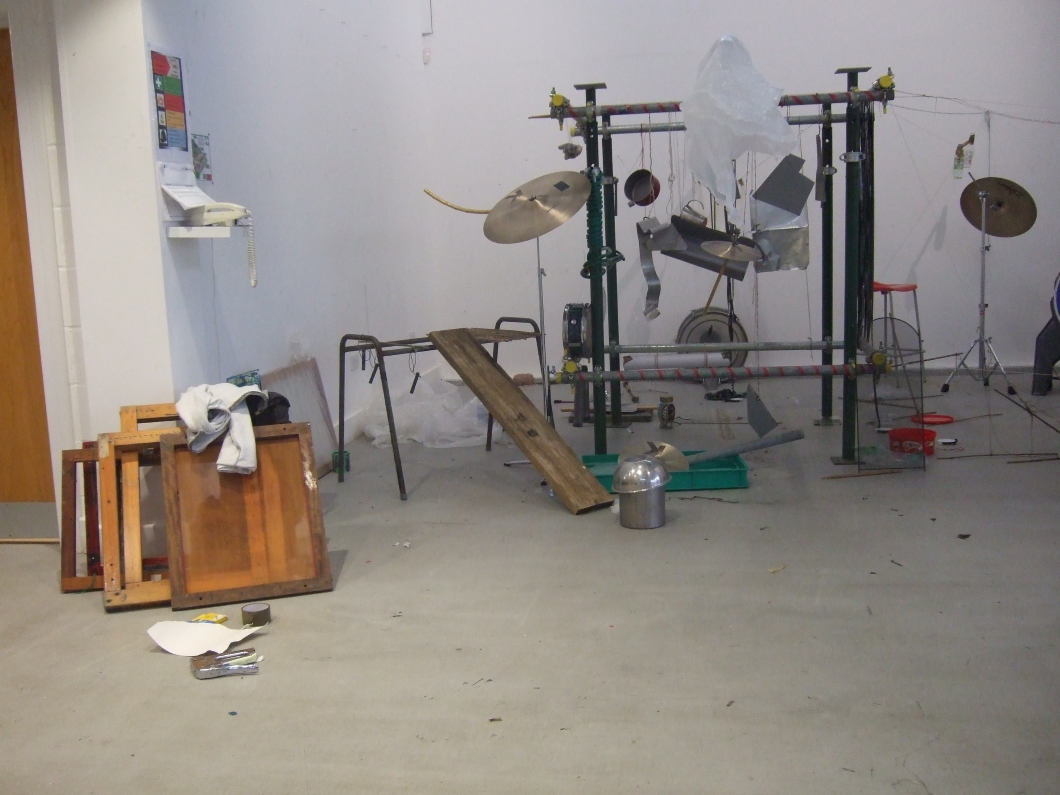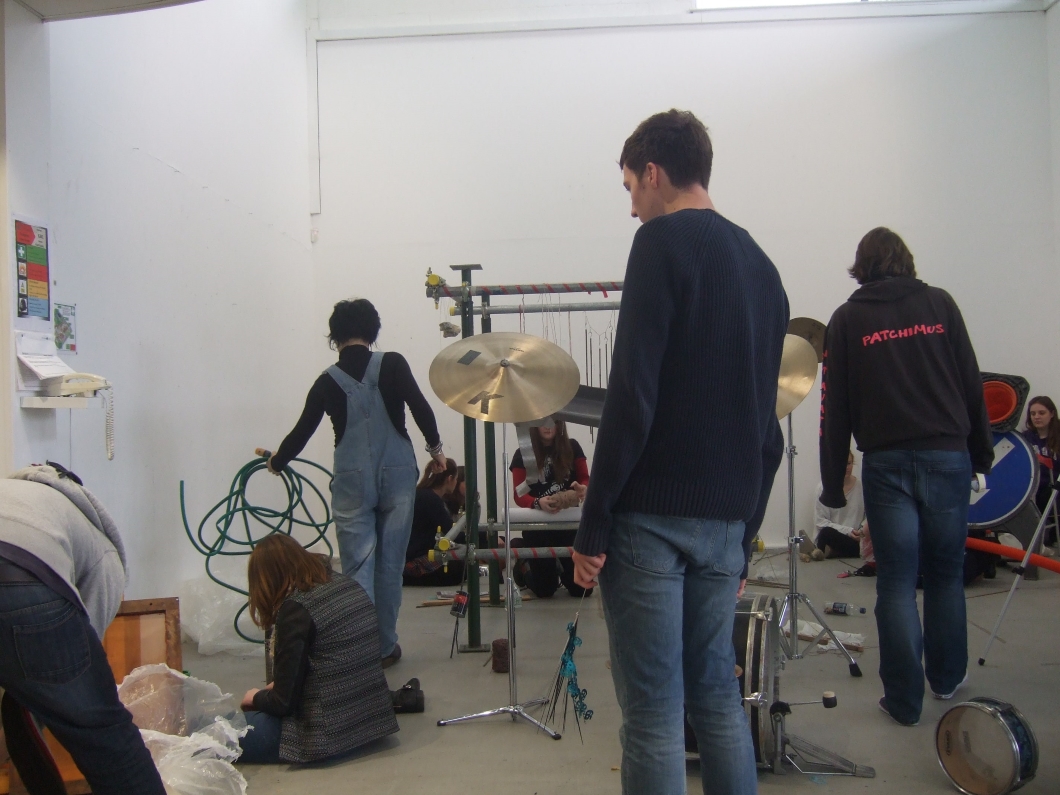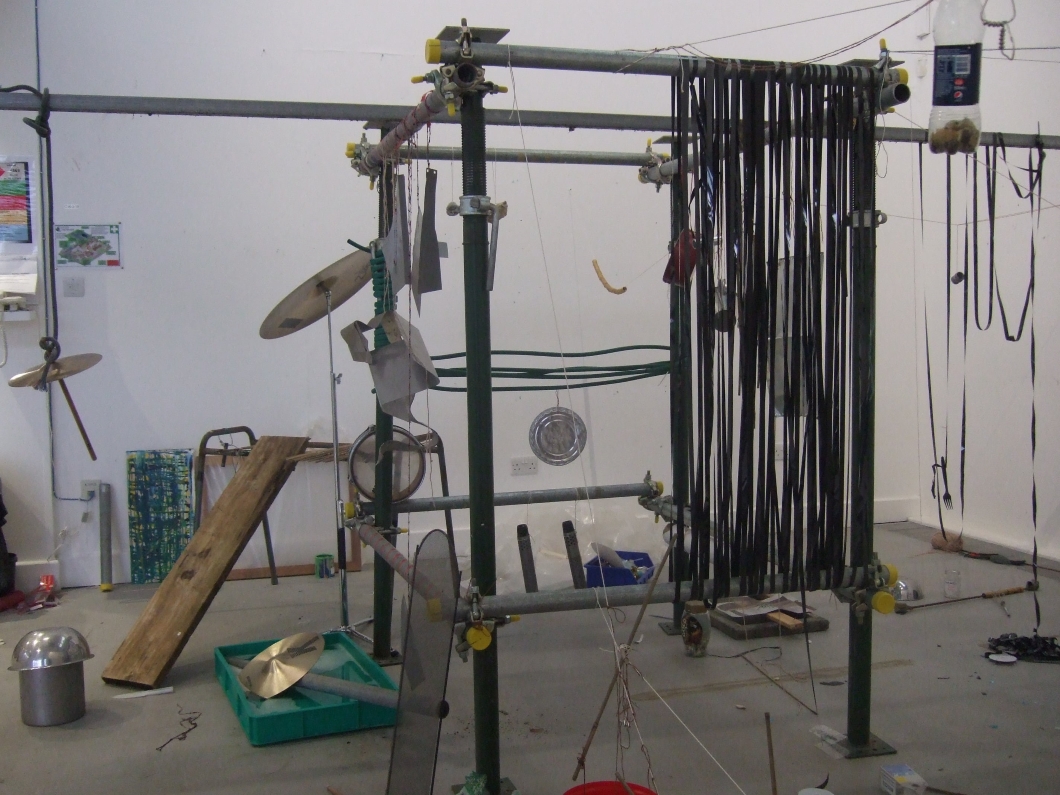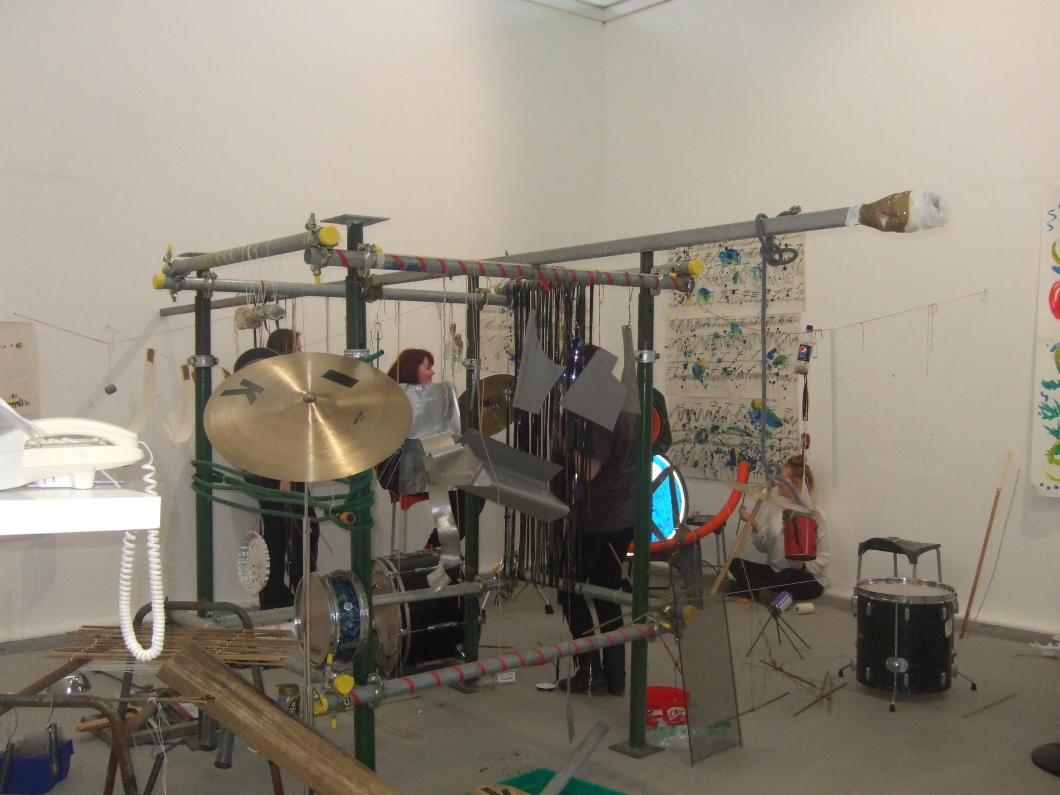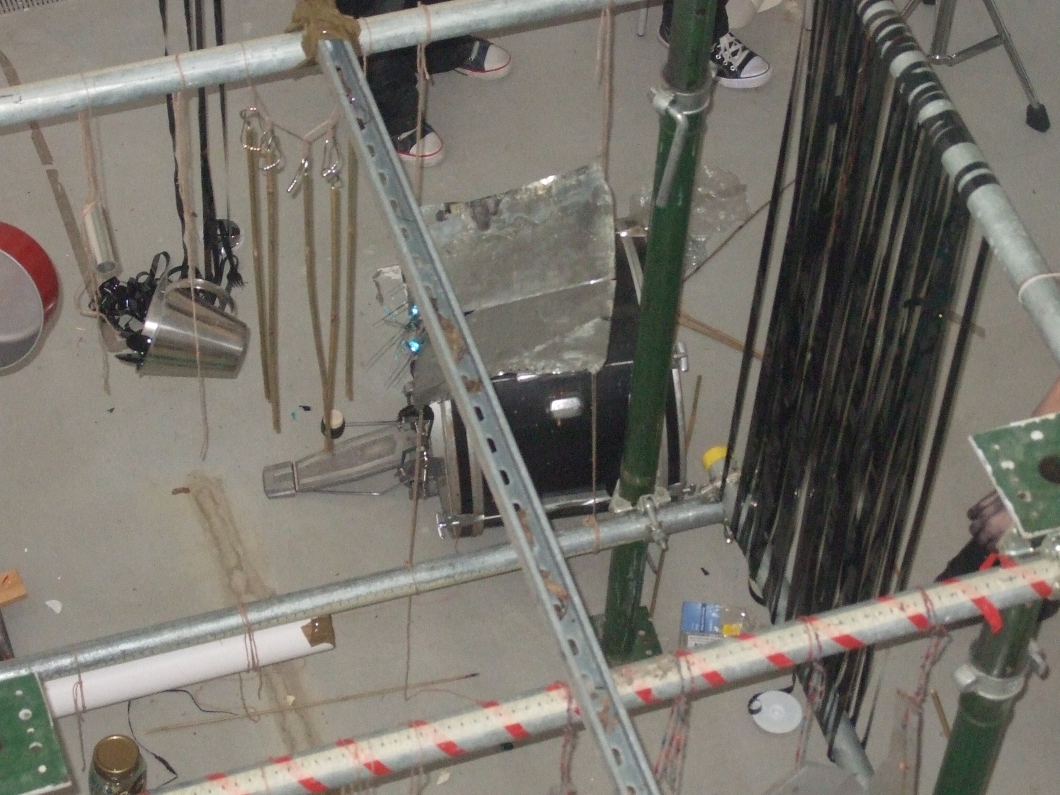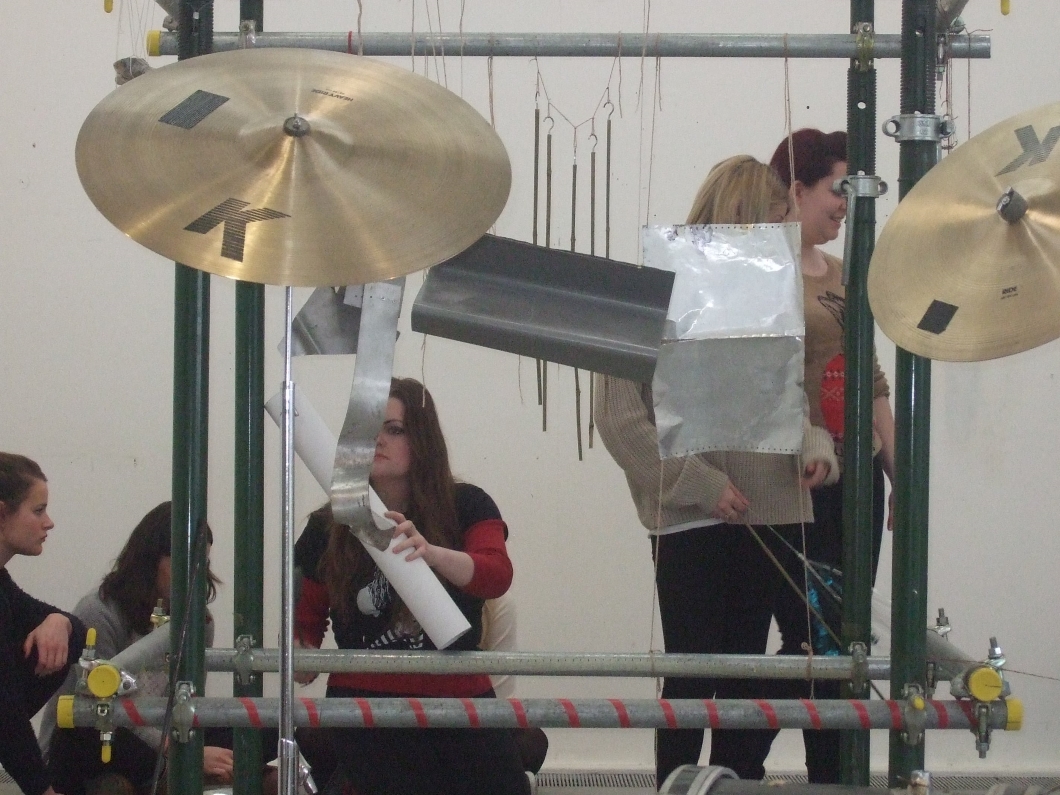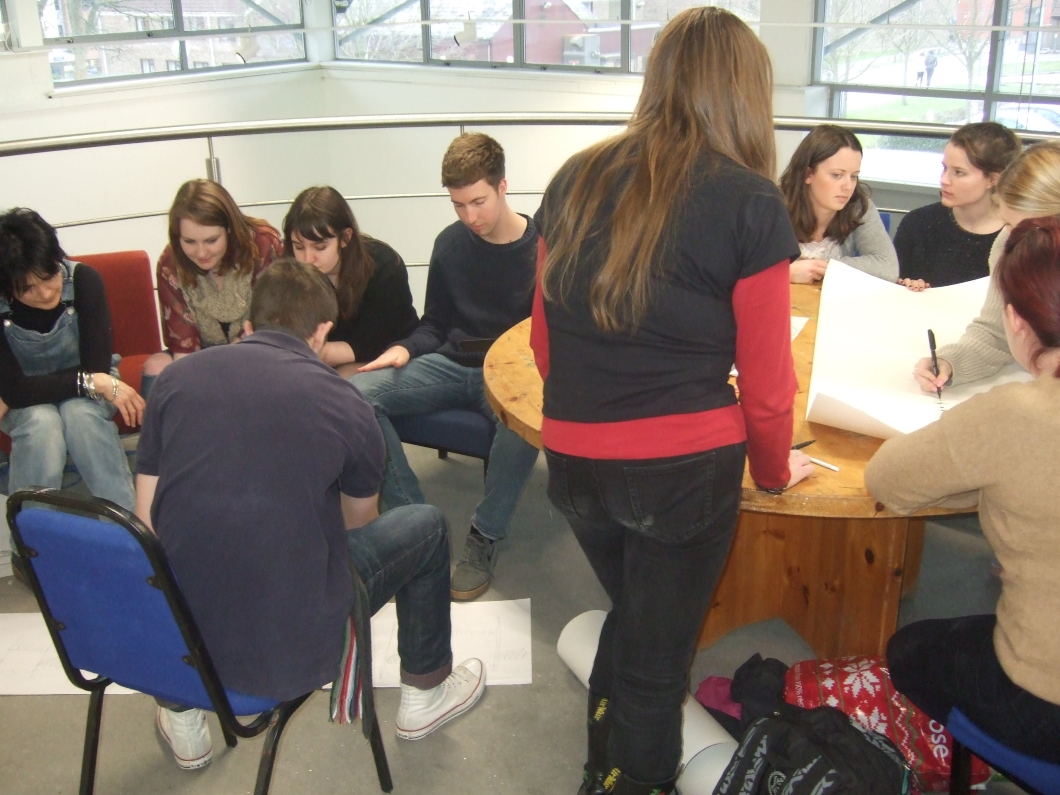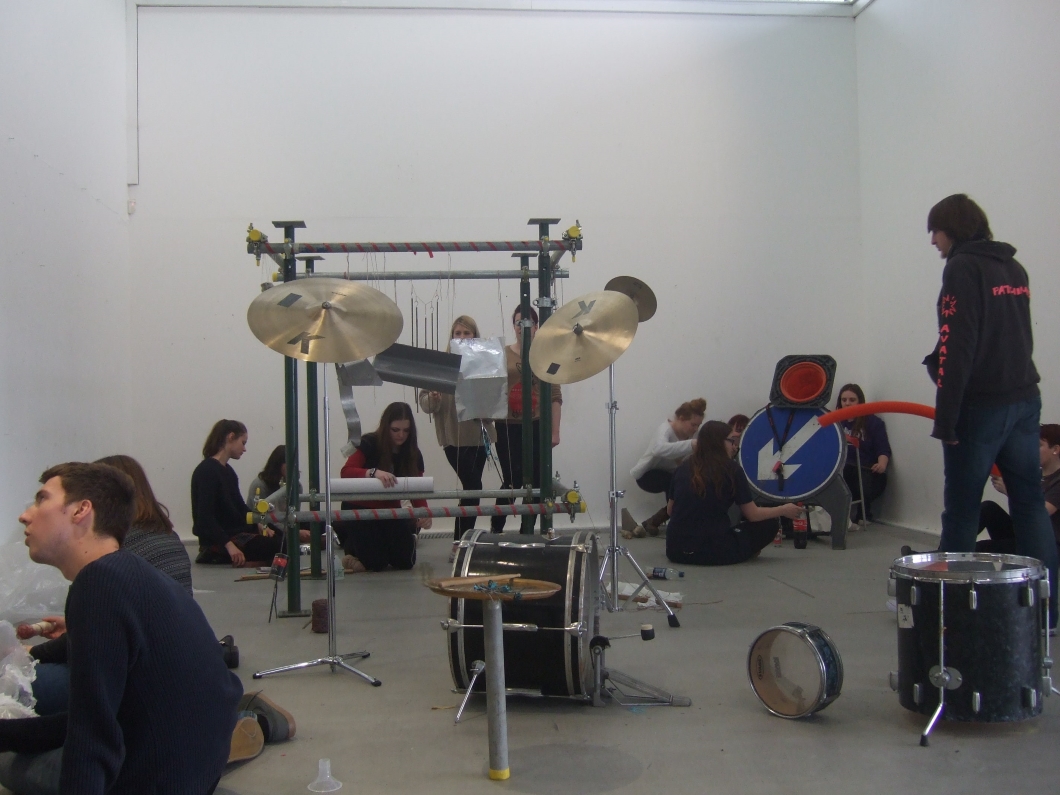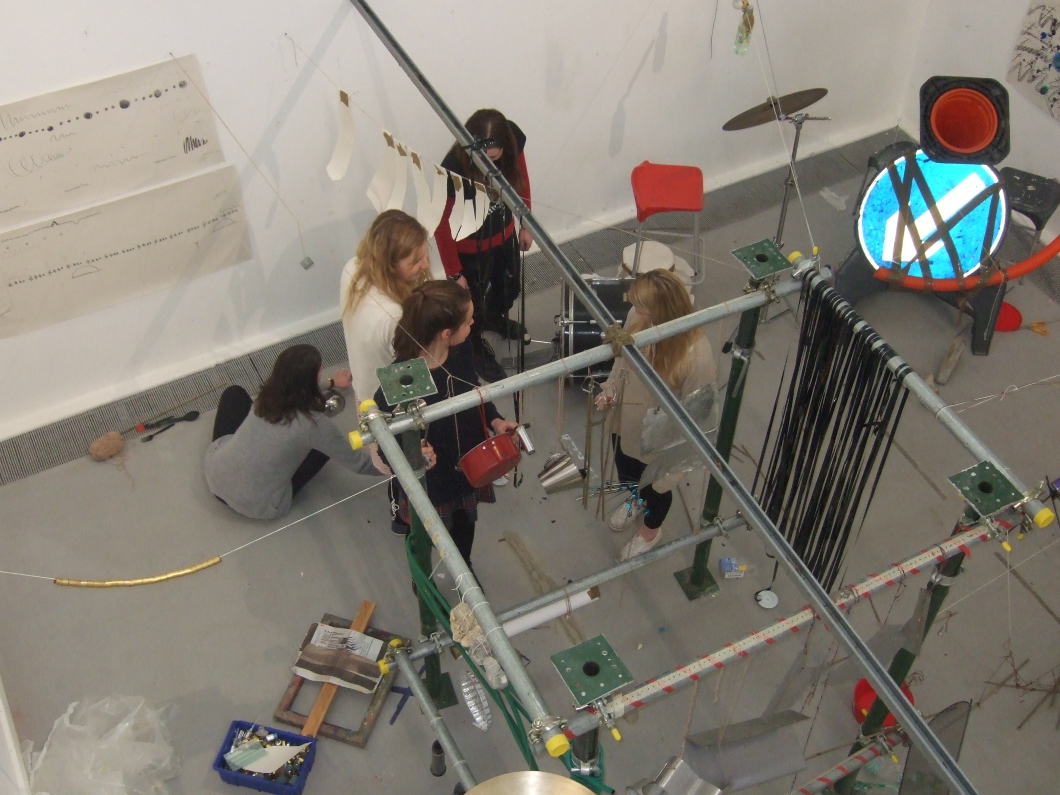Project Description
Sonic Workshop UoC
Sonic Workshop event in ArtOne UoC
The Sonic Workshop ran for a number of years at University of Chichester as part of the BA Fine Art programme. My colleague Elizabeth Colley and I invited the students to reconsider their relationship to music and to investigate the musical relationships between sonic and visual art. The group was first year students and the event linked studio work with the contextual history/theory input (which I also ran). The impetus came from a long standing interest in the area of musical and visual correspondence but in particular for the precedent of The Bow Gamelan Ensemble. I had followed their installation/sculptural works and had seen them perform in Spacex in Exeter in the 1980’s. The other obvious precedent was the work of the Futurists, Dadaists and 1960’s Happenings all of which were to be introduced in the lectures but later, only after the event. (Too much guidance or you simply get ‘copies’. When the experience is ‘raw’ there is more intense discovery and a good deal of problem solving. Latterly the historical contexts bring another understanding)
The process.
- Listen to some music. This was a range of music to expand on what might have been know to the students before. It included Ligeti, David S Ware, Steve Reich, Coltrane and various others where the extension of musical vocabulary, atonality, noise, screeching and propulsive rhythm were a common thread. (we didn’t play Doris Day, though it was suggested!) The other element was the work of Cornelius Cardew. He had been a visitor to Maidstone College of Art when I was a student and we’d played some of his scores in a large scale ensemble. (By sheer good fortune I was later part of a trio with Lou Gare who had played with Cardew in the famous AMM ensemble) ………..
- Make drawings in response to the music. Consideration of dynamics, duration, rhythm etc in the mark making process
3. Construct new scores based on these experiments and methods of marking found whilst listening to the music
4. Divide into small ensembles.
- Build the instruments. This was accomplished by using found objects in ArtOne building and around the university grounds (this is the Bow Gamelan relation) the only other objects were some drums and cymbals of mine to add some distinctive colour(see photos!)
- Test the scores work in preparation for the performance
- Perform the scores ! all were recorded and videoed

